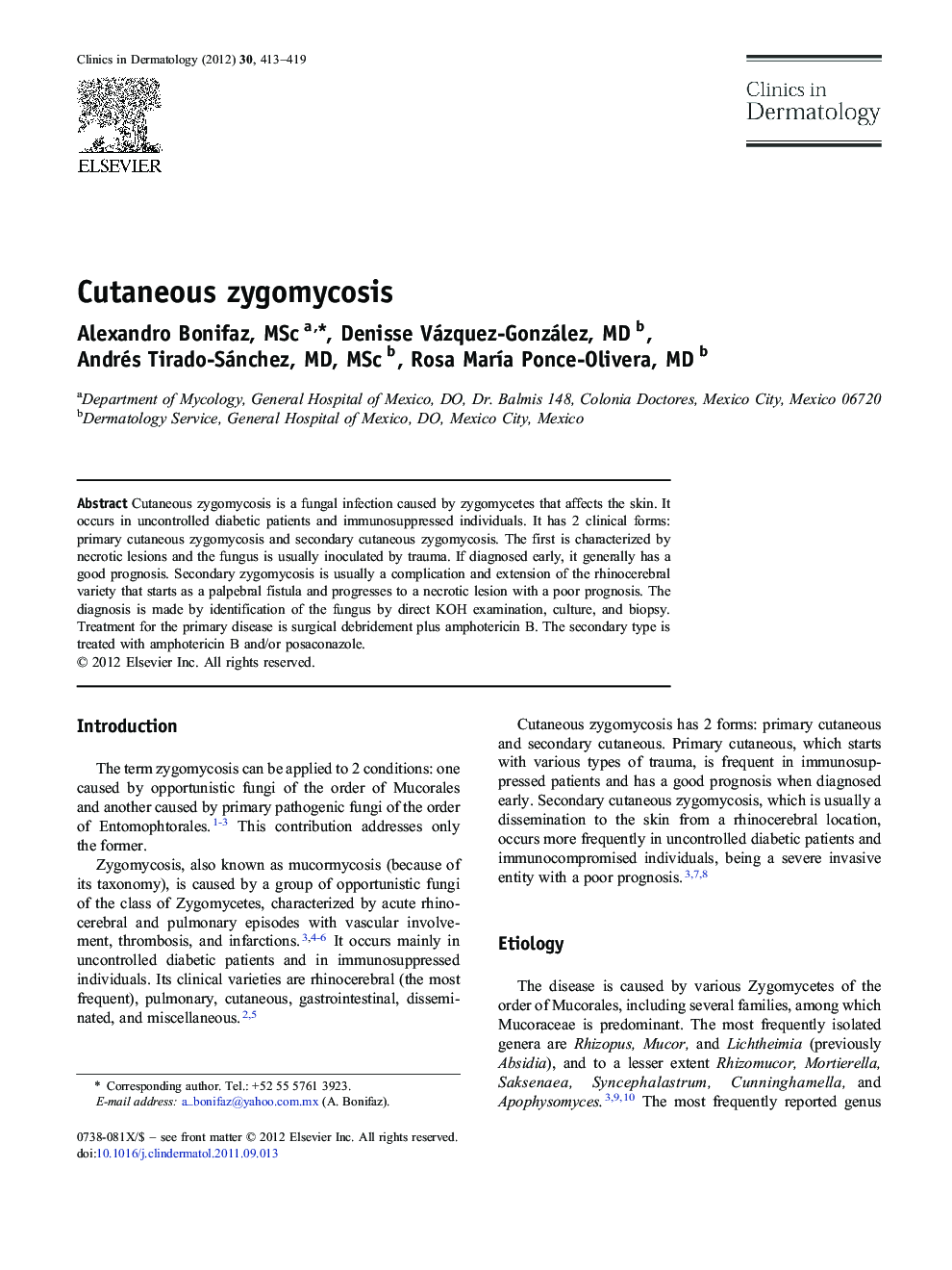| Article ID | Journal | Published Year | Pages | File Type |
|---|---|---|---|---|
| 3194541 | Clinics in Dermatology | 2012 | 7 Pages |
Cutaneous zygomycosis is a fungal infection caused by zygomycetes that affects the skin. It occurs in uncontrolled diabetic patients and immunosuppressed individuals. It has 2 clinical forms: primary cutaneous zygomycosis and secondary cutaneous zygomycosis. The first is characterized by necrotic lesions and the fungus is usually inoculated by trauma. If diagnosed early, it generally has a good prognosis. Secondary zygomycosis is usually a complication and extension of the rhinocerebral variety that starts as a palpebral fistula and progresses to a necrotic lesion with a poor prognosis. The diagnosis is made by identification of the fungus by direct KOH examination, culture, and biopsy. Treatment for the primary disease is surgical debridement plus amphotericin B. The secondary type is treated with amphotericin B and/or posaconazole.
